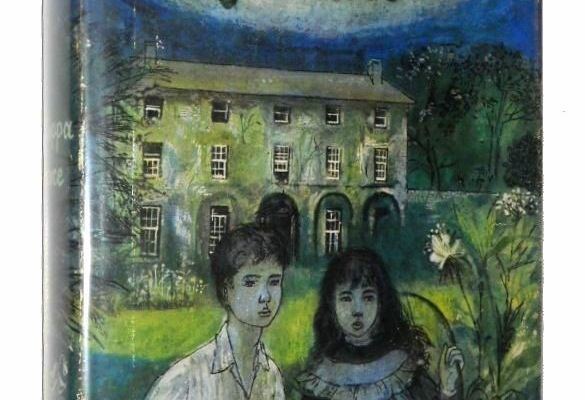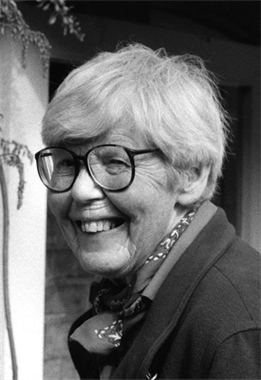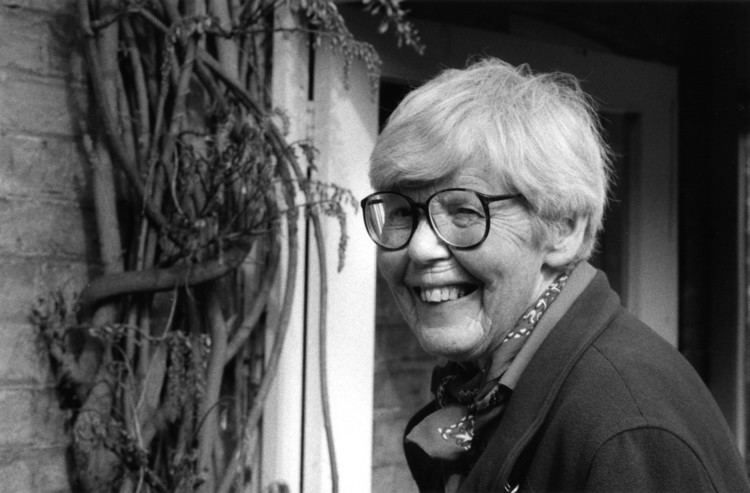Occupation Writer Children Sally Pearce Movies Tom's Midnight Garden | Period 1955–2008 Role Author Nationality British Name Philippa Pearce | |
Spouse Martin Christie (m. 1962–1964) Books Tom's Midnight Garden, A Dog So Small, Minnow on the Say, Tom et le jardin de minuit, Shadow‑cage Similar People Shirley Hughes, Nick Banks, James Berry, Steve Mackey, Willard Carroll | ||
Notable awards Carnegie Medal1958 | ||
Do Not Be Afraid to Be Afraid
Ann Philippa Pearce OBE (22 January 1920 – 21 December 2006) was an English author of children's books. Her most famous work is the time slip fantasy novel Tom's Midnight Garden, which won the 1958 Carnegie Medal from the Library Association, as the year's outstanding children's book by a British subject. Pearce was a commended runner-up for the Medal a further four times.
Contents
- Do Not Be Afraid to Be Afraid
- Toms Midnight Garden by Philippa Pearce BBC Teach
- Early life
- Writing career
- Personal life
- Legacy
- References

Tom's Midnight Garden by Philippa Pearce | BBC Teach
Early life

The youngest of four children of a flour miller and corn merchant, Ernest Alexander Pearce, and his wife Gertrude Alice née Ramsden, Philippa Pearce was born in the village of Great Shelford, Cambridgeshire, and brought up there on the River Cam at the Mill House. Starting school late at the age of eight because of illness, she was educated at the Perse School for Girls in Cambridge, and went on to Girton College, Cambridge on a scholarship to read English and History there.

After gaining her degree, Pearce moved to London, where she found work as a civil servant. Later she wrote and produced schools' radio programmes for the BBC, where she remained for 13 years. She was a children's editor at the Oxford University Press from 1958 to 1960 and at the André Deutsch publishing firm from 1960 to 1967.
Writing career
In 1951 Pearce spent a long period in hospital recovering from tuberculosis. She passed the time there thinking about a canoe trip she had taken many years before, which became the inspiration for her first book, a 241-page novel Minnow on the Say, published by Oxford in 1955 with illustrations by Edward Ardizzone. It was a commended runner-up for the annual Carnegie Medal. Like several of her subsequent books, it was inspired by the area where she had been raised: the villages of Great and Little Shelford became Great and Little Barley. Cambridge became Castleford in the book (nothing to do with the real town of the same name in West Yorkshire) and lost its university; the River Cam became the River Say. Minnow was published in the US as The Minnow Leads to Treasure (1958). It was adapted for television in Canada as a 1960 TV series with the original title, and for British television in 1972 as Treasure over the Water.
Pearce's second book was Tom's Midnight Garden, published by Oxford in 1958. Its "midnight garden" was based directly on the garden of the Mill House where Pearce was raised. The novel has become one of the classic "time slip" stories, inspiring a film, a stage play and three TV versions. It won the annual Carnegie Medal and for the 70th anniversary celebration in 2007, a panel named it one of the top ten Medal-winning works, which composed the ballot for a public election of the nation's favourite. Tom's Midnight Garden finished second in the vote from that shortlist, between two books that were about 40 years younger.
Pearce wrote over 30 books, including A Dog So Small (1962), The Squirrel Wife (1971), The Battle of Bubble and Squeak (1978) and The Way To Sattin Shore (1983). The Shadow Cage and other tales of the supernatural (1977), Bubble and Squeak, and Sattin Shore were the later three of her four Carnegie Medal runners-up. The Battle of Bubble and Squeak inspired a two-part television adaptation in Channel 4's Talk, Write and Read series of educational programming.
Although not a prolific author of full-length books, Philippa Pearce continued to work over subsequent years, as well as speaking at conferences, editing anthologies and writing short stories. She attended a 2002 reception for children's authors at Number 10 Downing Street, the home of the Prime Minister.
In 2004 Pearce published her first new full-length book for two decades, The Little Gentleman. One further children's novel was published posthumously in 2008: A Finder's Magic.
Personal life
Pearce married Martin Christie in 1962. They had one daughter, who became a children's author herself, as Sally Christie. Martin Christie, who had never wholly recovered from being a Japanese prisoner of war, died in 1964. From 1973 until her death from complications of a stroke in 2006, Philippa Pearce lived once again in Great Shelford, down the lane where she was raised.
Legacy
Every September from 2008, the Philippa Pearce Memorial Lecture at Homerton College, Cambridge celebrates "excellence in writing for children and to emphasize its continuing vital importance." The lecturers are children's literature authors, scholars or critics, and most of the lectures are published online.
